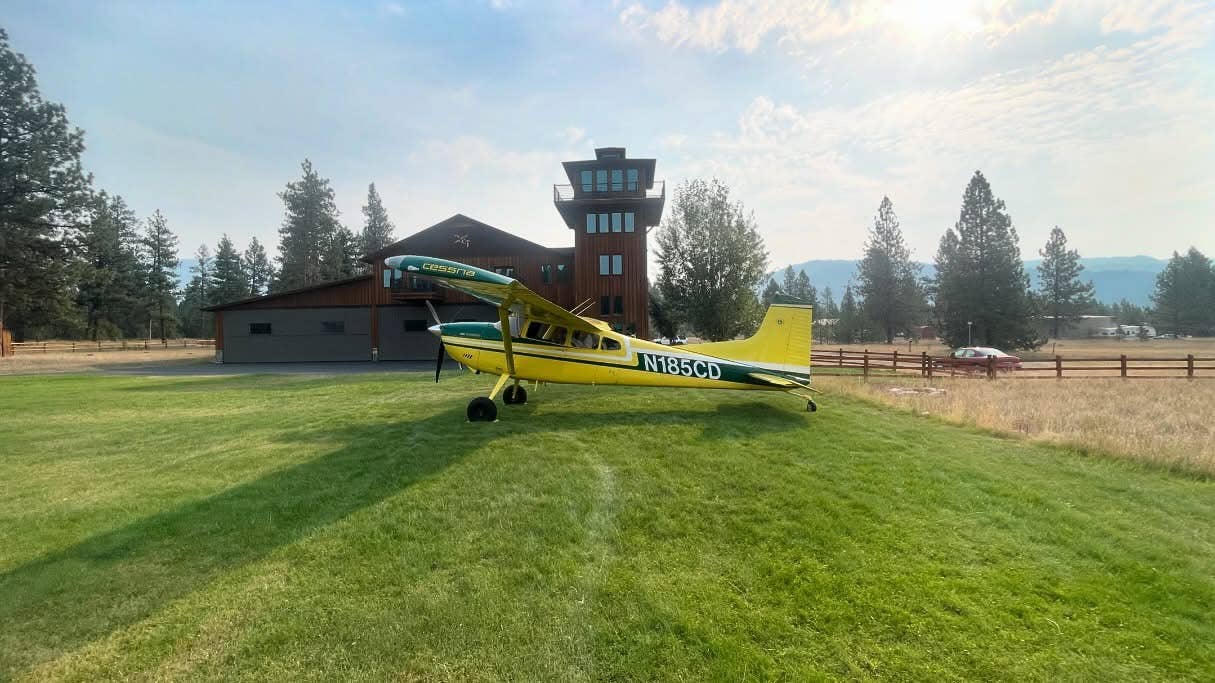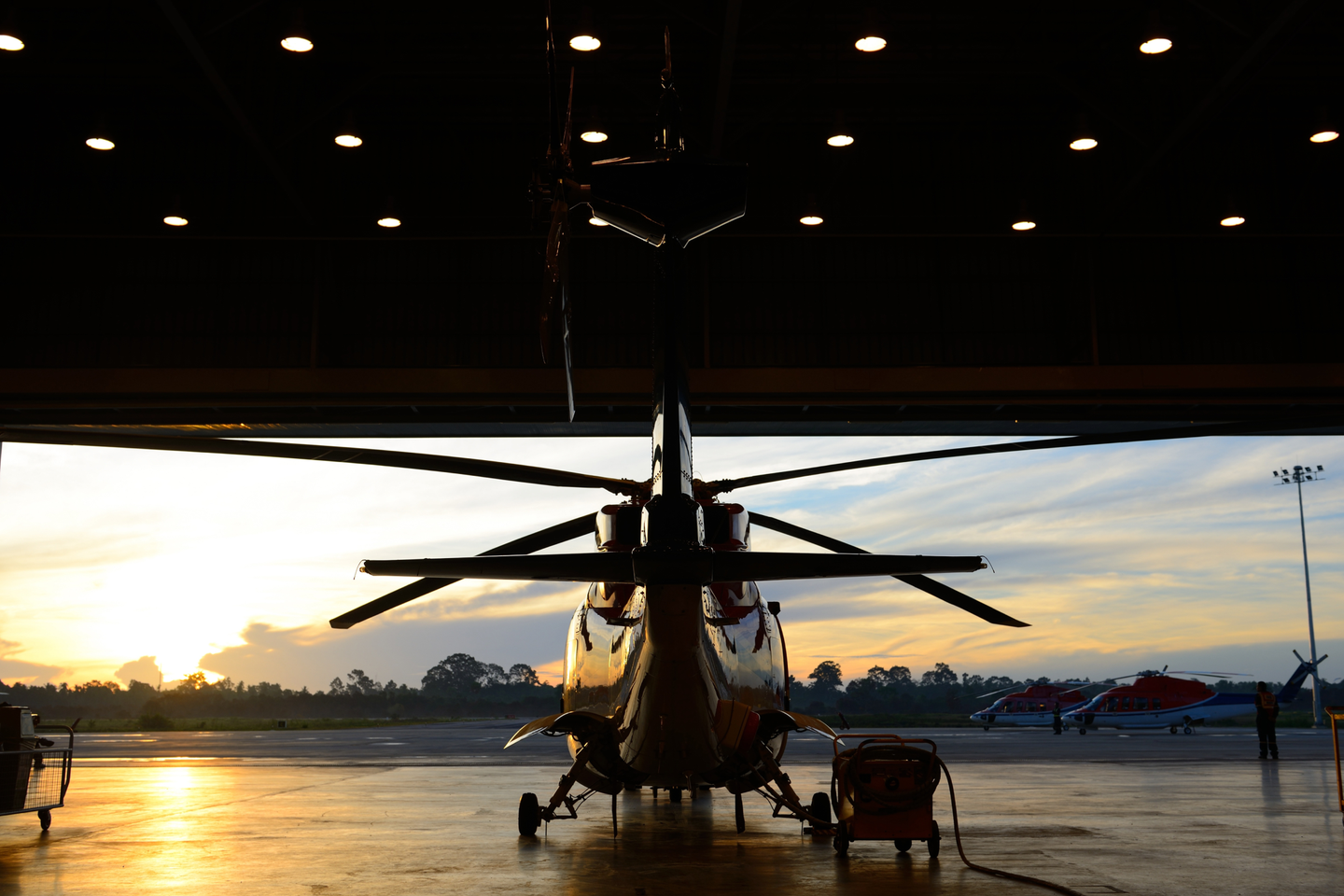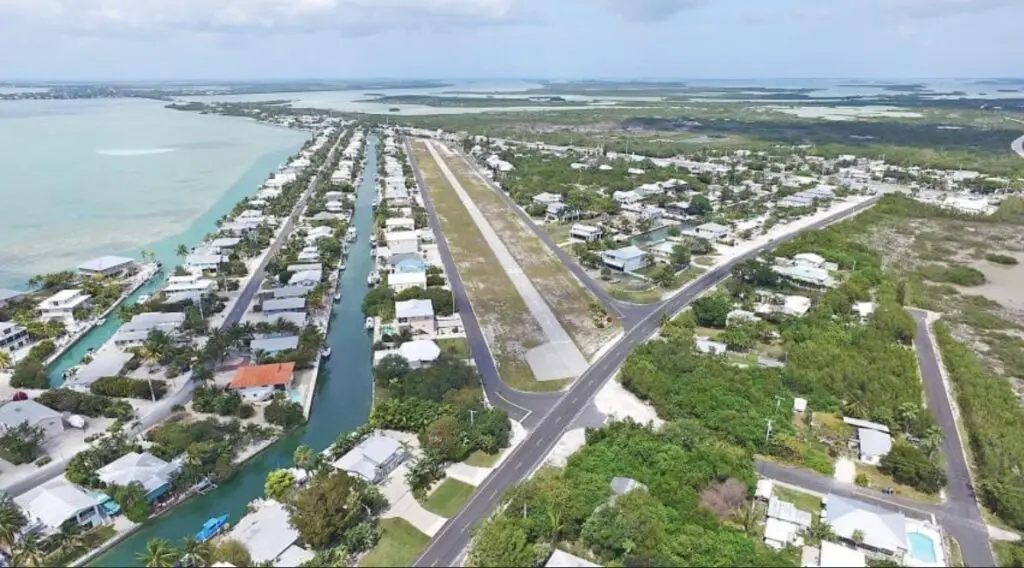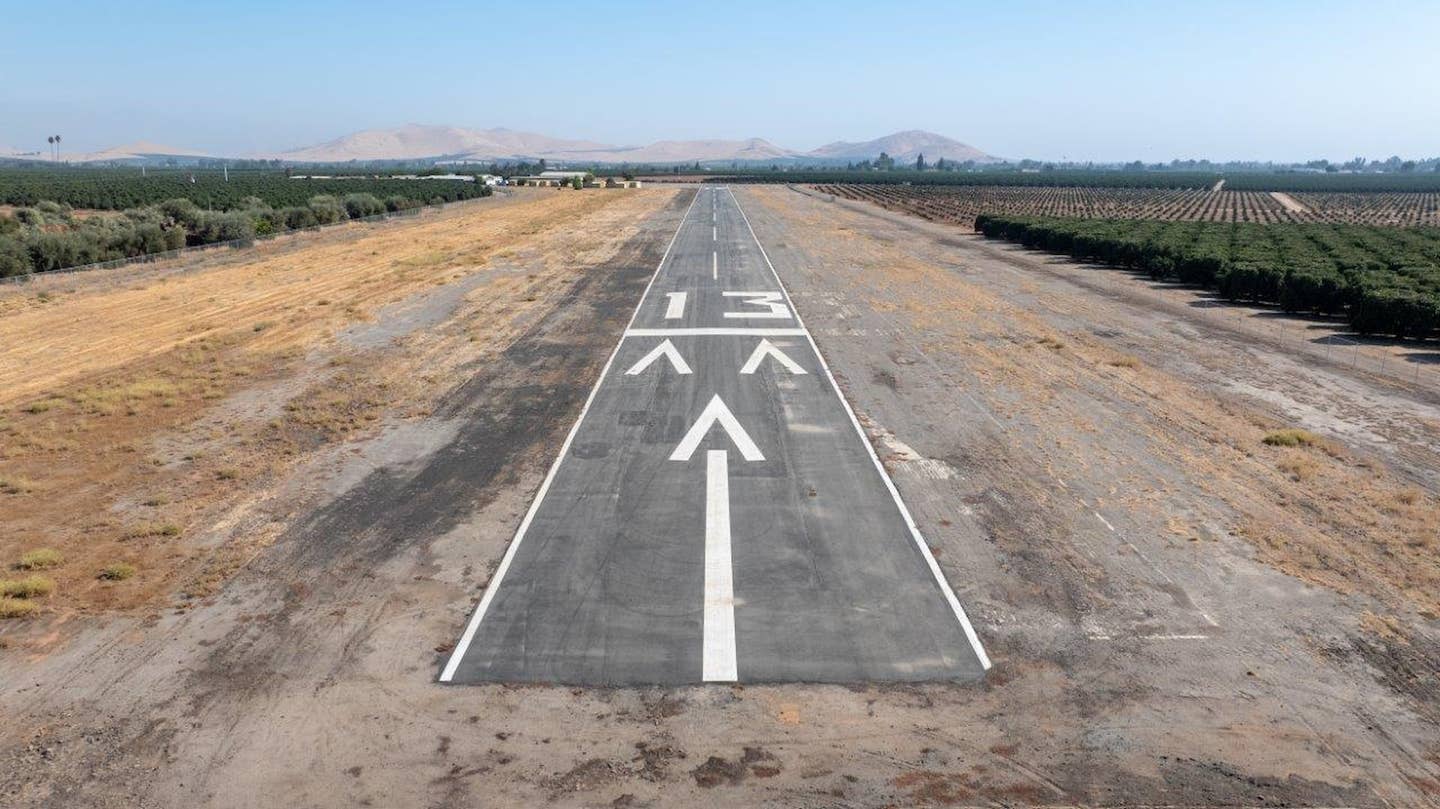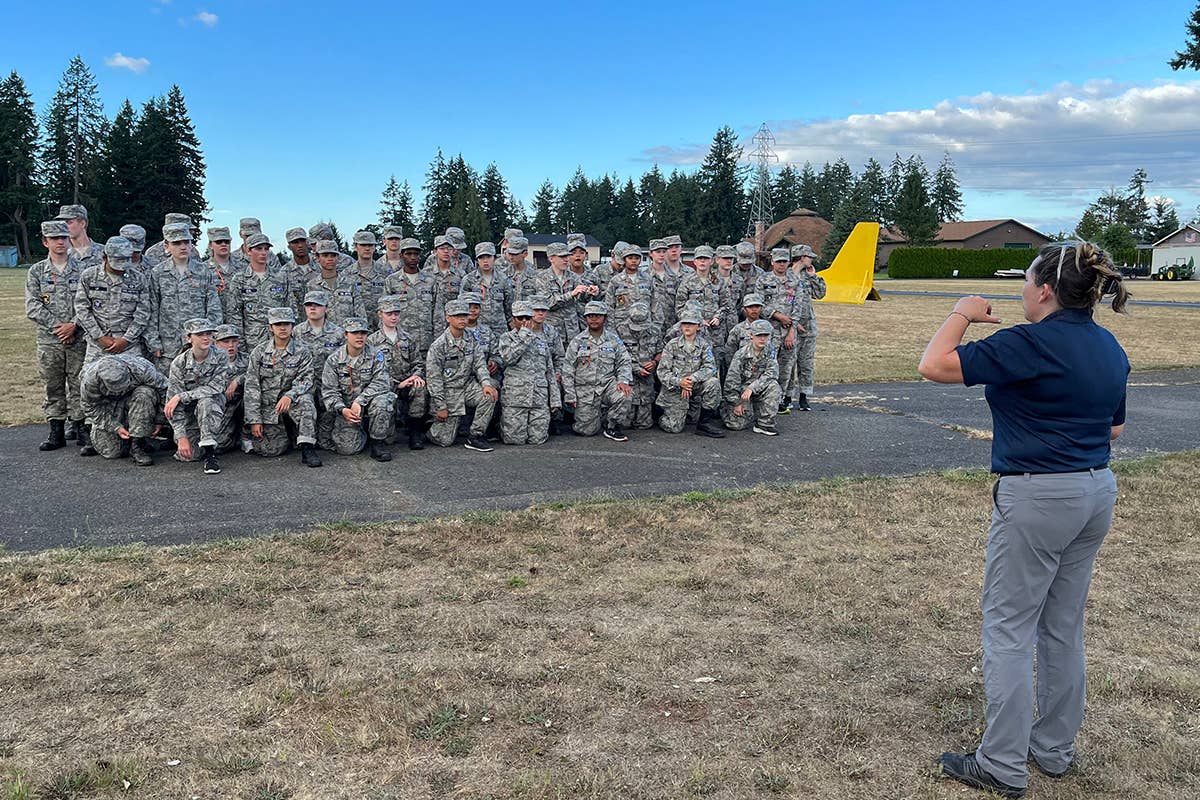
Guests at the airpark’s celebration included cadets from the Civil Air Patrol, representing units from all over the Evergreen State. [Photo: Meg Godlewski]
1962 was a banner year for aviation. Tirso I, the first weather satellite was launched. The Piper Cherokee made its debut—and Shady Acres (3B8) one of the first airpark communities in Washington State was established.
On August 13, residents and friends of the airpark celebrated the 60th anniversary with a barbecue and airplane wash. Among the guests were 60 cadets from the Civil Air Patrol, representing units from all over the Evergreen State. For the CAP it was an overnight campout.
"Shady Acres has always been kid-friendly," says Marianne Scott Lincoln, who, along with her brother, Jim, and sister, Judy, grew up at the airpark. Their father, Bill, was a pilot. Both Jim and Judy became pilots. Marianne flies a drone and her son, Aaron Krizek, is a pilot in the Air Force.
Judy Scott, who is in her 60s, still lives at the airpark. She played hostess to the weekend celebration. Her Cessna 172 Lady Hawk is just a few feet from her front door—both the airplane and the door to the house are painted bright orange.
Several pilots flew in for the event, putting their aircraft on display. The collection included a Stearman, the 1950s-era Cessna 172, a Cessna 150, and a Kitfox. Later in the day, a CAP Cessna 182 flew in from Joint Base Lewis McChord (KTCM), the Air Force base a few miles to the west of the field.
Shady Acres residents Suzy Omegna and Mike Gibbons fired up their industrial-sized barbecue, cooking up hot dogs and hamburgers. A buffet was served under the cover of an open-air pole hangar. According to Scott, that is pretty much par for the course with airpark living: "People help each other out, we know our neighbors."
Shady Acres in the Beginning
According to Lincoln, Shady Acres began as an idea discussed among pilots who were members of the Western Travelairs club. In the late 1950s, they met monthly at what is now Pierce County Airport-Thun Field (KPLU), a non-towered field located a few miles east of Shady Acres.
"There were enough of them who wanted to live on an airport with their airplane. The airpark grew out of those conversations," Lincoln says.
It took a few years to go from conversation to corporation, she adds. "On April 19, 1962, Harold LeMay, Jack Brown, and William ‘Bill’ Black filed Shady Acres Corporation at the State of Washington Secretary of State’s Office."
The airpark began as 40 acres that was subdivided into 2.5 acre parcels for pilots to build their homes and hangars.
Usually the hangar came first, Lincoln notes.
A few of the founders went on to be locally famous. Harold LeMay started a refuse company in the region after World War II. In addition to aviation, the LeMay family had an interest in vintage automobiles. Their private collection grew so large that in June 2012, they opened a museum in Tacoma to house the collection. His grandson, Eric LeMay, still lives at the airpark.
Slim Lawson, one of the first residents of Shady Acres, was also a flight instructor. For decades you would be hard-pressed to find a pilot in the Seattle area who did not have his name in their logbook.
Prairies, Forests, and Farms
When the airpark was established, Pierce County, located south of Seattle, was dominated by prairies, forests, and farms. Tacoma was a big city, with smaller communities of Puyallup, and Spanaway to the east. The military was the largest employer with Joint Base Lewis McChord then known as McChord Air Force Base and Fort Lewis Army Base housing the troops.
Shady Acres was carved out of 40 acres located south of McChord and east of Fort Lewis. Today, both bases are in Class D airspace and have control towers. It is not uncommon to see military aircraft overflying Shady Acres.
The airpark has grown to 47.75 acres. The farms have given way to cookie-cutter housing tracts and industrial parks. The south end of the airpark is bisected by a road. At ground level, there are warnings about low flying aircraft. The farm that bordered the north end of Shady Acres disappeared decades ago. The property is now occupied by the Frederickson Industrial Area that primarily serves manufacturing and distribution businesses such as Boeing (NYSE: BA), Tacoma Guitars, and Medallion Foods.
Getting in and Getting Out
Shady Acres can be a technically challenging airport. Runway 16/34 measures 1,800 feet by 20 feet. It's basically a strip of asphalt placed in the center of a grass field. There are obstructions (trees, fences, roads, etc.) at both ends. Pilots who train at Shady Acres learn short-field takeoffs and landings and soft-field takeoffs and landings from day one.
According to airnav.com, there are 21 airplanes based at the airport—a non-towered facility with a unicom frequency. A wind-tee and windsock are placed mid-field, and because the airpark is surrounded by trees which can block the wind, pilots are cautioned to get a weather briefing from nearby McChord and Thun Field before takeoff, because the trees act as a windbreak so the windsock can be deceiving.
When taking off from Runway 34 at Shady Acres, pilots are cautioned to turn east a few degrees to avoid clipping the Class D airspace of McChord, but not so far east that they fly over the Boeing factory—the large fans atop the facility’s buildings are there to vent heat from the kilns. They generate an updraft and turbulence that can be a life-changing event. In addition, McChord is a C-17 base, and it is not unusual to see the behemoth aircraft overflying Shady Acres a few hundred feet above pattern altitude.
Thun Field
To the east is the very busy, non-towered Thun Field. The airport has three flight schools, and it's not uncommon for their CFIs to bring their learners over to Shady Acres to practice short-field takeoffs and landings.
When approaching from the south, pilots are warned to keep an eye out for road traffic because the short approach takes you over a city street that runs perpendicular to the runway. In the past, there was some discussion about putting the street into a tunnel, but that idea was rejected as cost prohibitive, so instead there are road signs warning of low flying aircraft. The pilots do their part by respecting the displaced threshold on the runway.
The airport is not fenced off from the surrounding community. On occasion, there have been times when the aviation-impaired have come on to the property in cars and bikes and motorcycles and created a hazard by trespassing on the property and racing up and down the runway as if it was a drag strip. When this happens, often one of the residents will come out to let them know they are trespassing on an active runway.
The airpark is privately owned, but public use. The airport is a corporation and the homeowners are shareholders. They pay an annual fee toward airport upkeep and general maintenance. Because it is public use, pilots can fly in, but if they create a hazard or a nuisance, they are asked not to return. Occasionally, troublemakers are caught on video.
Living There
Suzy Omegna moved to Shady Acres four years ago before she had completed her private pilot certificate because she "wanted to live on an airport where I could fly by just taking a few steps from the front door."
The current residents are happy when they get new neighbors who are pilots. The greatest concern, Omegna says, is that shares may be sold to non-pilots, who might not see the value in the runway out their back door—until a Life Flight uses the airport for emergency flights and people see the value of the airport in the neighborhood.
The airport has been challenged before. In the early 2000s housewares giant IKEA announced plans to build a distribution center on 65 acres right off the extended centerline of Runway 34, resulting in encroachment of the airport overlay. The residents of Shady Acres hired an attorney and successfully fought the location. The distribution center was still built, but relocated so that it was no longer directly under the flight path of Runway 34.
Another challenge encountered by Shady Acres residents is when their non-flying neighbors see an airplane in the sky and automatically think it came from the airpark and the pilot is doing something unsafe or illegal.
Omegna tells a story of someone posting on a neighborhood app complaining about an airplane circling "2,000 feet overhead the pilot must have put it on autopilot—waiting for it to run out of gas" and worried that it was going to crash. Other neighbors chimed in, saying to call the FAA. A search of flightaware.com showed the airplane to be a Cessna 206 Stationair. A little more sleuthing revealed it was not someone from Shady Acres—it was law enforcement orbiting a traffic accident.

Sign-up for newsletters & special offers!
Get the latest FLYING stories & special offers delivered directly to your inbox



